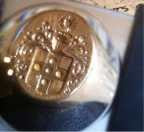Cubism, Then & Now
I've always loved cubist painting. It has been thought of as a revolutionary response to the development of photography, as a revolt from the academic salons then ruling the art world, and as an incredibly original and novel creation which set the art world on its 20th century path.
The still life work of Braques, Picasso and Gris is something I've always experienced as a profound elevation of the accouterments of everyday people. The flattening of the canvas imparts a new kind of realism by insisting on the actuality of the painting one is viewing.
Cubism is the pictorial and sculptural construction of an alternate reality. One that, to me, is very zen-like in its integration of space and object.
It did not take long for these works to become sought after collectors items, but that is not how they started out. Check out this piece in the NY Times about a well-to-do collectors promised donation to the Metropolitan Museum of Art. Some of these works define the genre, and so they can be viewed, on a regular basis, by the rest of us.
Here are a few images from the collection soon to be at The Met:
The still life work of Braques, Picasso and Gris is something I've always experienced as a profound elevation of the accouterments of everyday people. The flattening of the canvas imparts a new kind of realism by insisting on the actuality of the painting one is viewing.
Cubism is the pictorial and sculptural construction of an alternate reality. One that, to me, is very zen-like in its integration of space and object.
It did not take long for these works to become sought after collectors items, but that is not how they started out. Check out this piece in the NY Times about a well-to-do collectors promised donation to the Metropolitan Museum of Art. Some of these works define the genre, and so they can be viewed, on a regular basis, by the rest of us.
Here are a few images from the collection soon to be at The Met:






<< Home